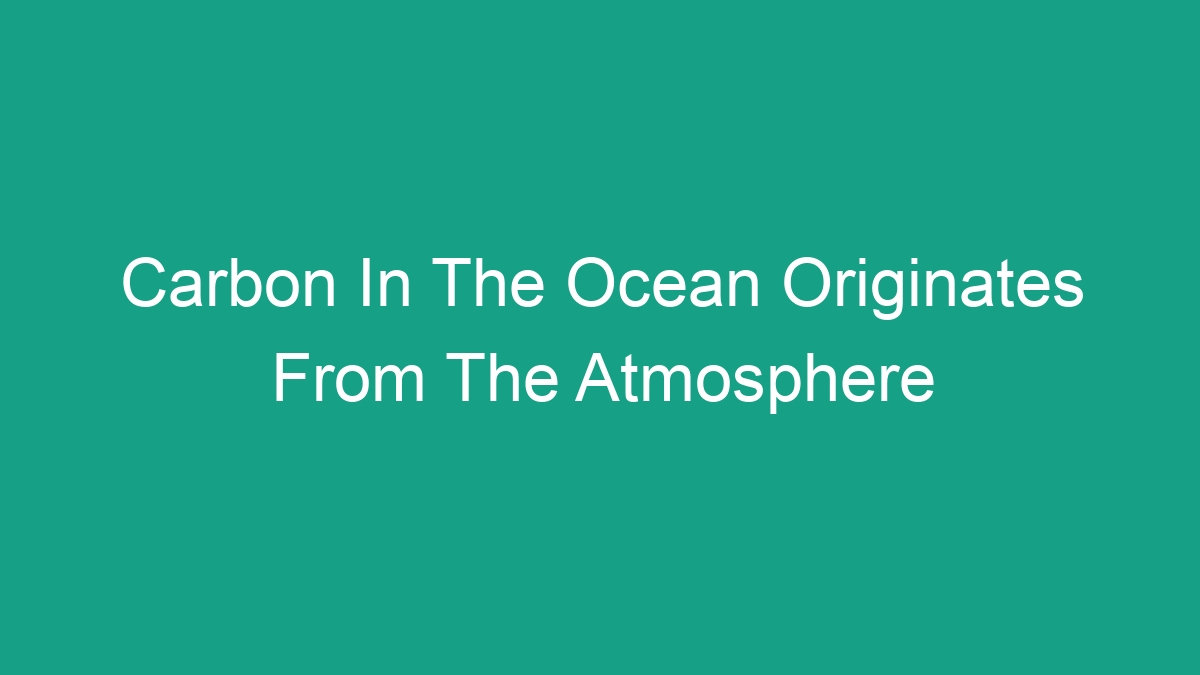
Carbon is an essential element for life on Earth, and it moves between the atmosphere and the ocean in a process known as the carbon cycle. The carbon cycle is a complex system of interactions between the atmosphere, the land, and the ocean, where carbon is exchanged through various chemical, physical, geological, and biological processes. In this article, we will explore how carbon in the ocean originates from the atmosphere and its implications for the environment.
The Carbon Cycle
The carbon cycle is crucial for maintaining the balance of carbon in the Earth’s systems. It involves the movement of carbon through different reservoirs, such as the atmosphere, oceans, land, and living organisms. This cycle is driven by a variety of processes, including photosynthesis, respiration, weathering, combustion, and decomposition.
Carbon Exchange Between the Atmosphere and the Ocean
Carbon exchange between the atmosphere and the ocean is a vital part of the carbon cycle. This exchange occurs through several mechanisms, including:
- Atmospheric CO2 dissolving in the ocean: Carbon dioxide (CO2) from the atmosphere dissolves in the surface waters of the ocean, forming carbonic acid. This process, known as oceanic uptake, is a significant mechanism for transferring carbon from the atmosphere to the ocean.
- Biological processes: Marine organisms, such as phytoplankton, take up carbon dioxide during photosynthesis. When these organisms die and sink to the ocean floor, they sequester carbon in the form of organic matter, which can become part of the ocean’s carbon reservoir for long periods.
- Physical processes: Physical mixing and circulation in the ocean can transport carbon from the surface to deeper waters. This vertical transport of carbon is crucial for storing carbon in the deep ocean and influencing the overall carbon balance.
Implications for the Environment
Understanding the mechanisms of carbon exchange between the atmosphere and the ocean is essential for predicting the impact of human activities on the global carbon cycle and the environment. Some important implications include:
- Ocean acidification: The uptake of carbon dioxide by the ocean leads to a decrease in pH, resulting in ocean acidification. This can have detrimental effects on marine life, especially on organisms that rely on calcium carbonate for their shells and skeletons.
- Climate change: Carbon dioxide is a greenhouse gas that contributes to global warming. The transfer of carbon from the atmosphere to the ocean can influence the balance of CO2 in the atmosphere and potentially affect the Earth’s climate.
- Biological productivity: The availability of carbon in the ocean influences biological productivity, including the growth of phytoplankton and the marine food web. Changes in carbon levels can impact the overall health of marine ecosystems.
FAQs
Q: How does carbon dioxide dissolve in the ocean?
A: Carbon dioxide dissolves in the ocean through a process called diffusion, where molecules move from areas of high concentration (the atmosphere) to areas of low concentration (the surface waters of the ocean). This leads to the formation of carbonic acid, which contributes to ocean acidification.
Q: What is the impact of increased carbon in the ocean on marine life?
A: Increased carbon in the ocean can lead to ocean acidification, which can disrupt the growth and health of marine organisms, particularly those with calcium carbonate structures such as corals, shellfish, and some planktonic species.
Q: How does the ocean regulate carbon levels in the atmosphere?
A: The ocean acts as a carbon sink, absorbing large amounts of carbon dioxide from the atmosphere. This helps to regulate atmospheric carbon levels and contributes to the overall balance of carbon in the Earth’s systems.



